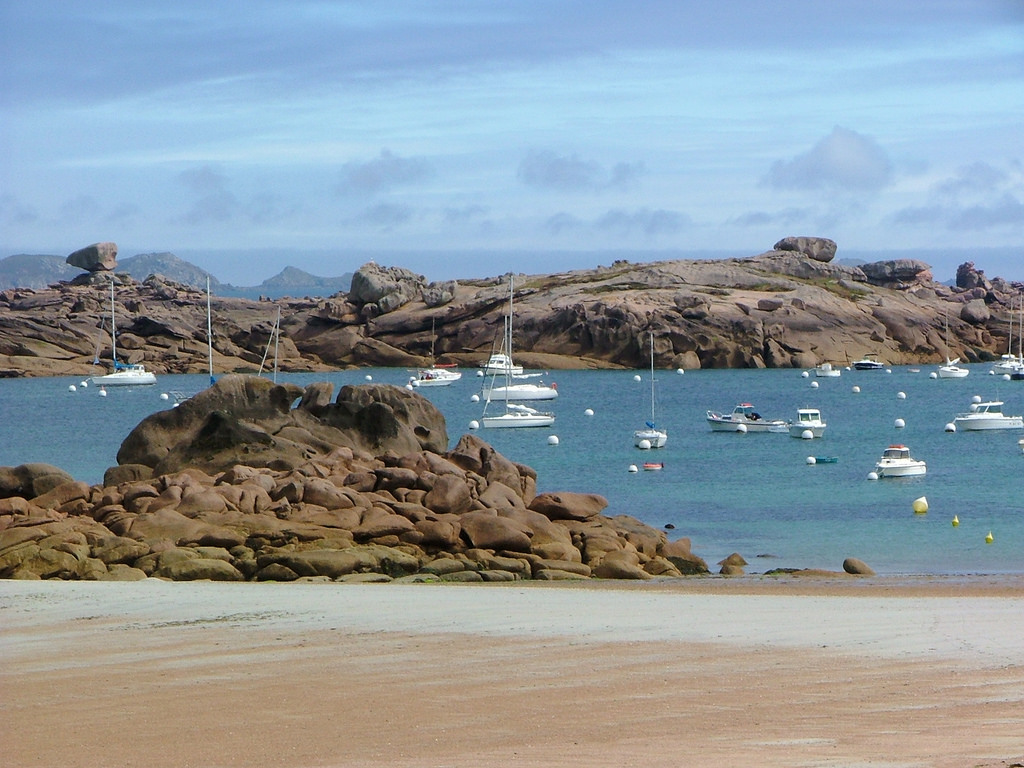
SARZEAU, France — The Age of Discovery has left its mark in Lorient, the starting point for Stage 5 in the Tour de France on Wednesday.
A town in Brittany featuring five ports, Lorient was created in the 17th century to host shipyards of the French East India Company. The town took its name from a ship called “Soleil d’Orient” and nicknamed “L’Orient.”
A blend of Indian spices called Kari Gosse remains an integral part of Breton cuisine, used to complement the local seafood — namely oysters.
Lorient remains dedicated to the seas as one of France’s leading fishing ports and a world-leading centre for building and repairing racing yachts — along with Auckland, New Zealand.
As the race heads deeper into cycling-crazy Brittany, expect to see the black-and-white striped flag of the region everywhere. Known as Gwenn ha du — “black and white” in Breton — the five black stripes represent the dioceses of eastern Brittany and the four white ones those of western Brittany.
Brittany is also the home of five-time Tour champion Bernard Hinault.
As the Tour heads into more undulating territory, here’s a gastronomical, sporting and cultural glance at Stage 5:
BAGUETTE AND BUTTER: The 204.5-kilometre (127-mile) route goes over three third-category and two fourth-category climbs before reaching the finish in Quimper. At an average gradient of 6.2 per cent for three kilometres, the Menez Quelerc’h hill 45 kilometres from the finish could create a split in the peloton. Still, Greg Van Avermaet will be expected to hold on to the yellow jersey in terrain that suits him.
PLAT DU JOUR: Oysters from Riec-sur-Belon, located 29 kilometres into the stage. These flat oysters farmed in the Belon River are considered among Brittany’s finest. Their distinctive nutty taste is the result of the mixture of salt and fresh water passing through the river. The shellfish is celebrated each July with a “Fete de l’Huitre” — oyster festival.
CULTURE: Pont-Aven, located 33.5 kilometres into the route, inspired the Pont-Aven School of artists. In the late 19th century, the small town’s picturesque setting attracted the likes of Paul Gauguin and Emile Bernard.
VIN DU JOUR: Brittany has historically been a difficult region for vineyards due to the windy and often rainy climate next to the Atlantic. So why not try an ice-cold sparkling apple cider (known locally as “cidre”) to wash down those oysters? Poured from champagne-style bottles, the local cider is usually served in ceramic bowls or wide cups.
STAT OF THE DAY: 4 — The number of kilometres in Stage 4’s finishing straight, the longest of this year’s Tour.
QUOTE OF THE DAY: “He’s faster than me.” — World champion Peter Sagan on Fernando Gaviria, the Colombian who has beaten him in two of the three sprints in this year’s race.
DESSERT: Kouign-amann butter cake. Round and crusty, it’s like a condensed croissant, only sweeter.
NEXT ORDER: The Tour remains in Brittany for Stage 6 on Thursday, another hilly leg of 181 kilometres (112 miles) from Brest to Mur-De-Bretagne Guerledan.